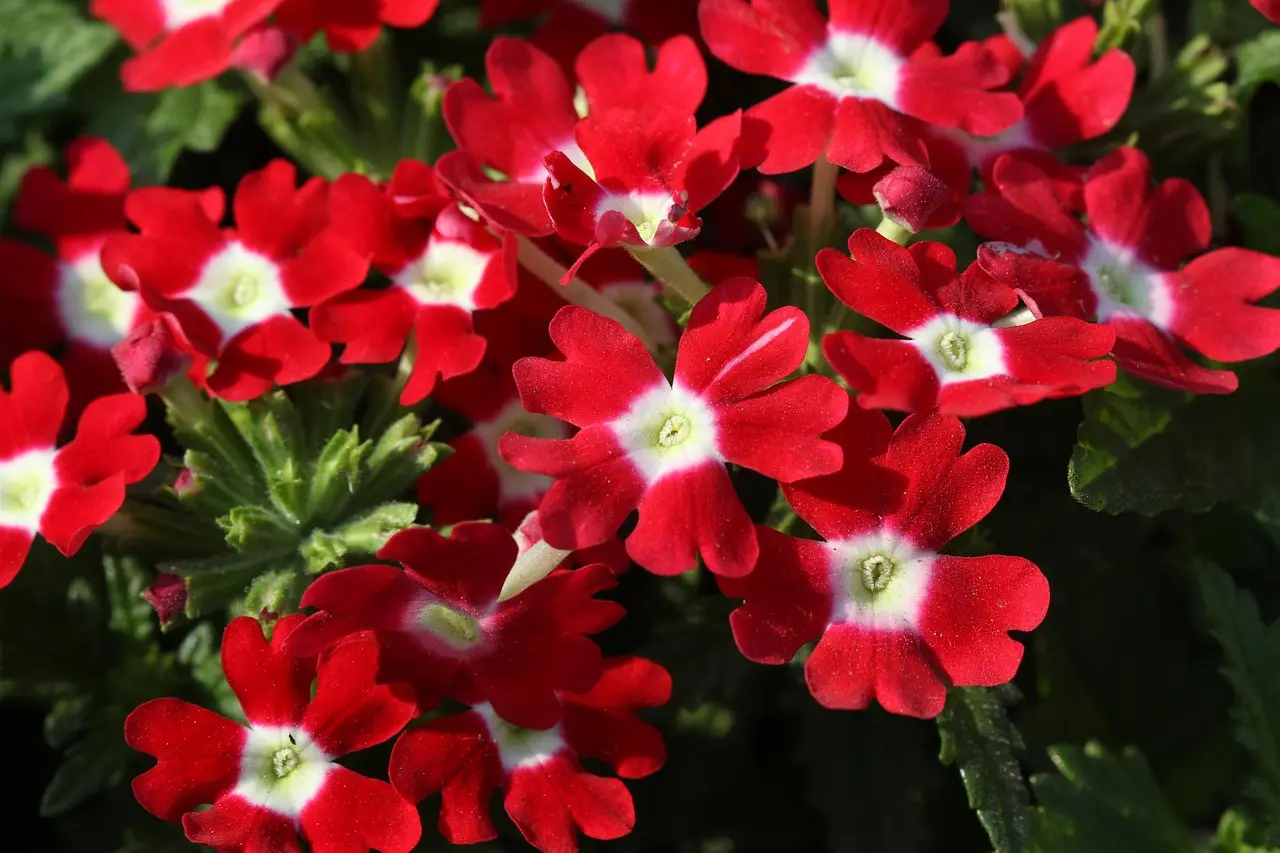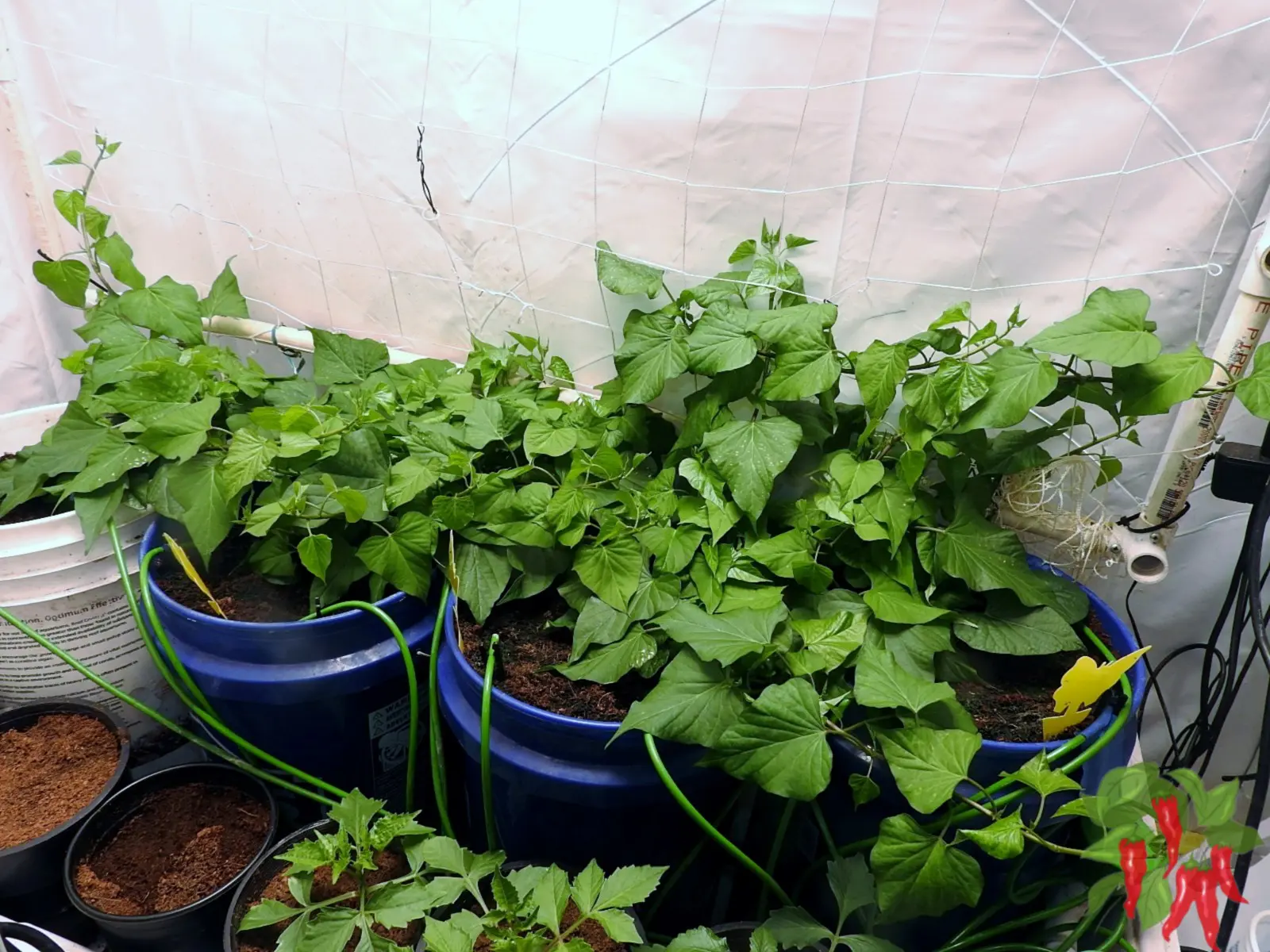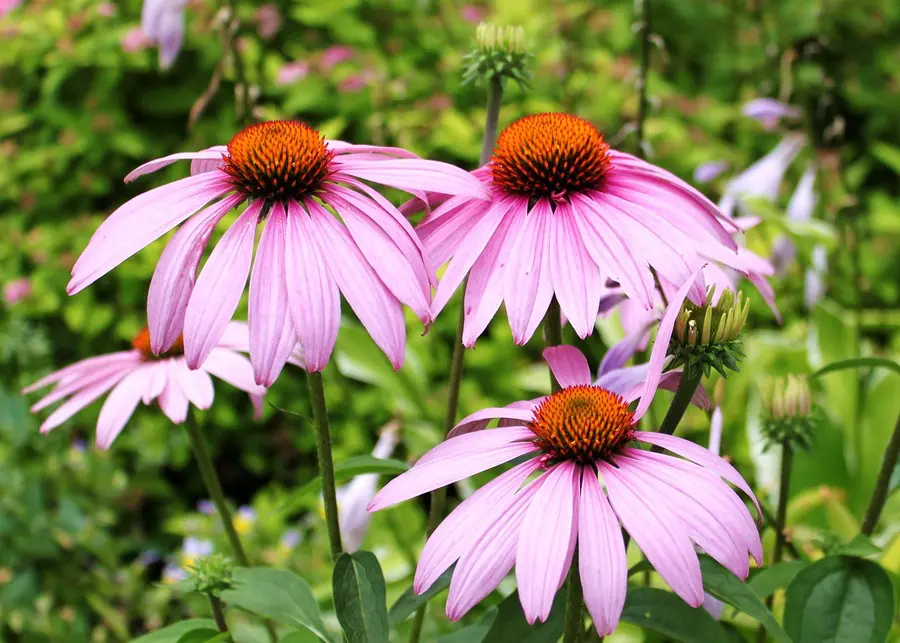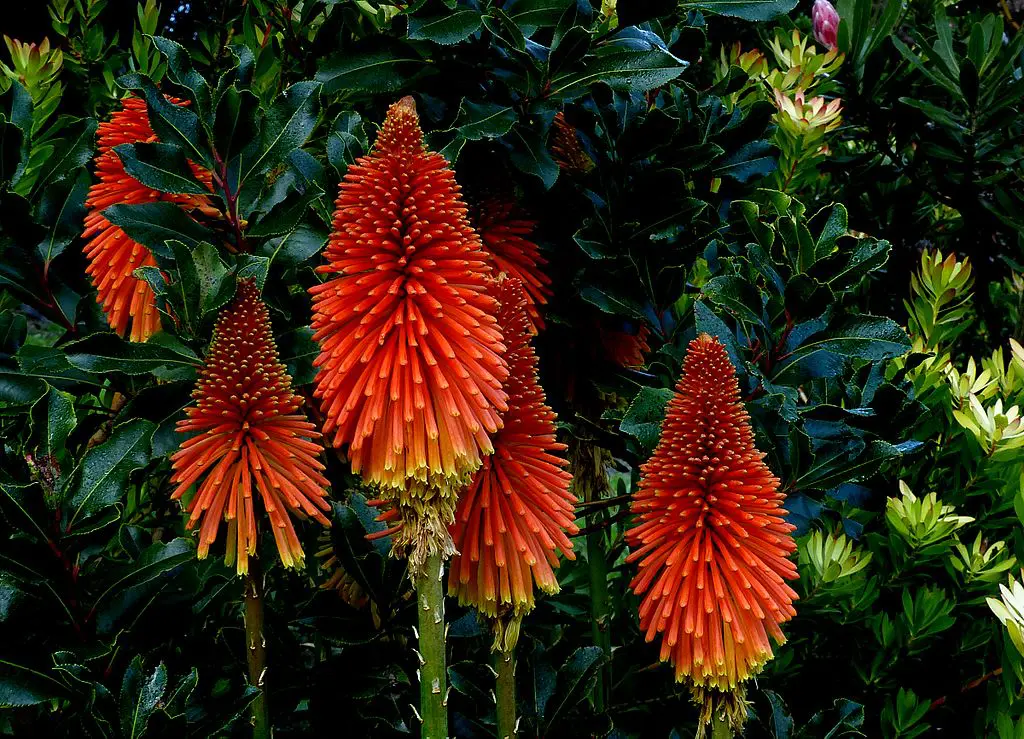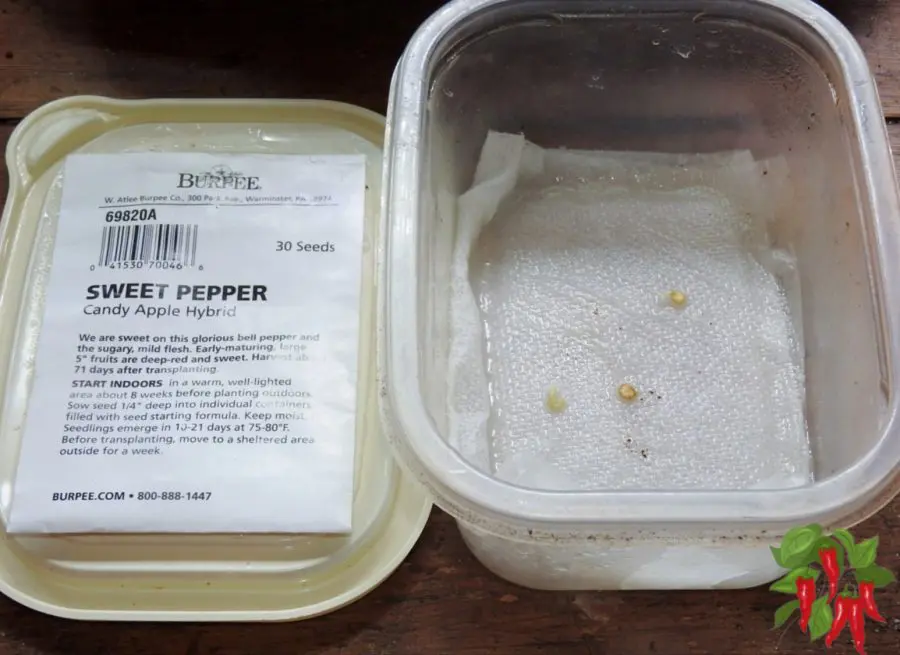This post contains affiliate links. If you buy something from one of our links we may earn a commission. Thanks
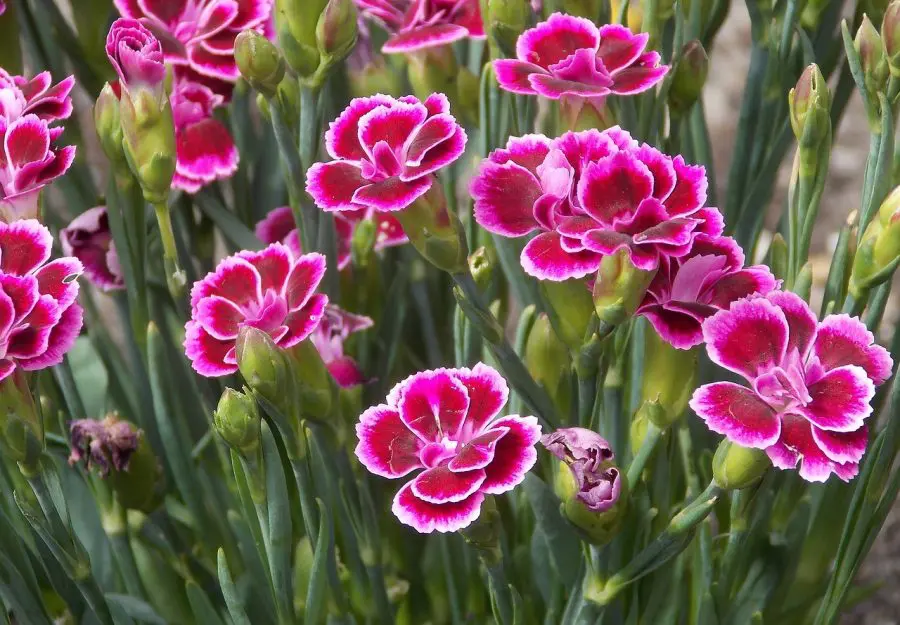
Embark on the journey of growing Dianthus in pots with our easy-to-follow guide. Cultivate beautiful blooms and enliven your space with these vibrant flowers!
To grow Dianthus in pots, select a container with good drainage and fill it with a well-draining potting mix. Plant the Dianthus 6 to 8 inches apart and water thoroughly. Place the pot in a location that receives at least 6 hours of sunlight daily. Keep the soil moist but not soggy, and feed with a balanced fertilizer as needed.
Isn’t it wonderful how a simple pot brimming with radiant Dianthus flowers can transform a balcony or patio into a stunning visual treat?
Whether you’re an experienced gardener or just starting out, growing Dianthus in pots is a delightful project that yields beautiful and fragrant rewards.
As you embark on this horticultural adventure, not only will you add a vibrant splash of color to your space, but you’ll also discover the inherent joy that gardening brings.
Join us as we unravel the process of planting, caring, and nurturing these captivating blooms right in your pot!
Introduction: Growing Dianthus in Pots
Welcome to our comprehensive guide on growing Dianthus in pots.
Are you ready to brighten up your outdoor space, or even a sunny indoor spot, with these vibrant, versatile flowers?
You’re in the right place! We’ll be exploring everything from understanding the basics about Dianthus to selecting the perfect pot, preparing the soil, and expert planting techniques.
Plus, we’ll delve into essential care tips, winter preparations, propagation methods, and answers to frequently asked questions.
By the end of this journey, you’ll be equipped with all the knowledge needed to successfully grow your own thriving pot of Dianthus. Let’s dive in and let the blooming begin!
Brief Overview of Dianthus
Delightful, vibrant, and a bit flirtatious, Dianthus plants, often referred to as Pinks or Sweet Williams, add a dash of charm to any garden.
But what’s in a name, you might wonder? The term Dianthus, derived from Greek, literally translates to divine flower or flower of the gods.
And truly, with their captivating hues and spicy scent, these flowers live up to their divine reputation.
The Dianthus genus is a rich one, boasting a variety of species – Dianthus barbatus, Dianthus caryophyllus, Dianthus deltoides, Dianthus chinensis, and many more.
They come in a range of sizes, are mostly perennial, and yes, they can spread quite beautifully in your pots.
Importance and Benefits of Growing Dianthus in Pots
Now, why would you want to take up growing Dianthus in pots, specifically?
Well, growing Dianthus in pots offers an abundance of benefits.
For starters, if you’re someone with limited outdoor space or live in an apartment, container gardening can be your gateway to nurturing a personal green oasis.
You can easily move the pots around to create changing displays or to catch the best light.
Plus, growing Dianthus in containers gives you better control over the soil and growing conditions, making it easier to manage their needs.
Did you know Dianthus plants are not huge fans of soggy roots? With pots, you can ensure their soil stays well-drained.
One more advantage of growing Dianthus in pots? Versatility!
From window boxes to patio tabletops and even indoors near a sunny window, your pots of Dianthus can bring color, fragrance, and beauty to every corner.
And don’t forget the joy you’ll experience seeing these divine blooms thriving under your care.
Understanding Dianthus
Ready to delve deeper into the world of Dianthus? Fantastic!
In this section, we’ll be exploring more about these divine blooms, their origins, types, and characteristics that make them such an appealing choice for container gardening.
We’ll also address some common questions – are they perennial or annual? Do they spread? And are they safe around our feline friends?
So, get comfy, and let’s embark on this exciting journey to understand Dianthus better together!
Origin and Types of Dianthus
Originating from Europe and Asia, Dianthus is a genus of around 300 species of Dianthus, each with its unique charm.
Some of the most popular types include the Sweet William (Dianthus barbatus), known for its striking clusters of flowers, the Cottage Pink (Dianthus plumarius) with a delightful spicy fragrance, and the China Pink (Dianthus chinensis) which impresses with its variety of colors.
Each type brings with it a touch of uniqueness, but all are undeniably captivating!
Characteristics of Dianthus
What sets Dianthus apart? These plants are generally known for their vibrant, fringed flowers that typically bloom in shades of pink, red, and white, often with contrasting eye-catching centers.
Their flowers aren’t just a visual delight; they also emit a spicy, clove-like fragrance that can fill your garden or indoor space with an inviting aroma.
The foliage is slender and grass-like, providing a perfect green backdrop for the striking blooms.
Dianthus Plant Size
The size of Dianthus plants can vary based on the species, but most of them are compact, making them perfect for pot cultivation.
Generally, Dianthus plants range from 6 to 18 inches in height and spread about 12 to 24 inches wide.
So, even in a relatively small pot, they can create a dramatic impact.
Is Dianthus Perennial?
Most Dianthus varieties, including the ever-popular Sweet Williams, are perennial, meaning they can bloom year after year.
However, some varieties are biennial (two-year lifecycle) or even annual.
It’s always a good idea to check the specific lifecycle of the variety you are planting.
Does Dianthus Spread?
Indeed, they do! Dianthus plants are known to spread gracefully, especially in favorable conditions.
When grown in pots, they can easily fill the space, creating a lush, colorful display.
It’s always a delight to watch these flowers bloom and spill over the sides of your containers.
Is Dianthus Poisonous to Cats?
As pet lovers, we understand your concern. While some sources do list Dianthus as safe for pets, it’s always best to err on the side of caution, especially when it comes to our beloved pets.
Dianthus plants can indeed be harmful to cats if ingested. Symptoms of poisoning might include vomiting, diarrhea, abdominal pain, and difficulty breathing.
If your cat comes into contact with Dianthus and starts showing any of these symptoms, please contact your vet immediately.
Always remember that it’s better to keep potentially harmful plants out of reach of your pets or opt for pet-safe plants instead. Your cat’s safety comes first.
Preparing for Planting
Alright, now that we’re familiar with the splendid world of Dianthus, let’s roll up our sleeves and get our hands a little dirty!
In this section, we’re going to look at how to prepare for planting these lovely flowers in pots.
Choosing the right pot, preparing the soil, and understanding the roles of coco coir and perlite, it’s all part of the adventure.
So, are you ready to bring your gardening dreams to life? Let’s jump right in and start the preparations!
Choosing the Right Pot
Choosing the right pot is a crucial first step when it comes to growing Dianthus in containers.
Since these plants love well-drained soil, you’ll need a pot with ample drainage holes to prevent waterlogging.
Size-wise, aim for a pot that’s at least 12 to 15 inches deep. This gives your Dianthus enough space to spread its roots and thrive.
The material of the pot can vary from plastic to clay to ceramic. Each type has its pros and cons, but just ensure it’s durable and allows for proper drainage.
Preparing the Soil
Dianthus prefers slightly alkaline soil. You can buy a good quality potting mix designed for flowering plants and amend it with a bit of lime to achieve this.
The soil should be fertile and rich, but most importantly, it needs to drain well. Soggy soil can lead to root rot, which can be a death sentence for your Dianthus.
Also, don’t forget to add a slow-release fertilizer to the soil before planting. This will provide essential nutrients to the plant throughout the growing season.
Using Coco Coir and Perlite
Now, let’s talk about coco coir and perlite, two excellent additions to your potting mix.
Coco coir, derived from the husk of coconuts, is an organic, peat-free, and sustainable soil conditioner.
It has excellent water-holding capabilities, yet it also promotes good drainage and prevents the soil from compacting, which is essential for root health.
It also already is at the proper pH for your Dianthus.
Perlite, on the other hand, is a type of volcanic glass that’s heated until it pops like popcorn, resulting in lightweight, porous particles.
Adding perlite to your potting mix helps improve aeration and drainage, which can be especially beneficial for Dianthus plants.
A 50-50 mix of coco coir and perlite can create an ideal environment for your potted Dianthus to grow and bloom happily!
Planting Dianthus in Pots
Alright, gardeners! The stage is set. The pots are selected, the soil is prepared, and we are all excited to get our Dianthus seeds in there!
In this section, we’ll guide you through the process of planting Dianthus in pots.
From sowing the seeds to choosing the perfect companions for your Dianthus, we’ve got it all covered.
So, don your gardening gloves, summon your inner green thumb, and let’s immerse ourselves in the joy of planting these lovely blooms.
Here we go!
Step-by-Step Guide to Planting
• Preparation: Start by filling your selected pot with the prepared soil mixture we discussed earlier. The pot should be filled to about an inch below the rim to allow space for watering.
• Planting the Seeds: Sow the Dianthus seeds on the soil surface. They need light to germinate, so don’t bury them deep into the soil. Just a light cover of soil or compost will do.
• Watering: Gently water the seeds, being careful not to displace them. A fine mist sprayer is excellent for this.
• Germination: Place the pot in a warm location with good light exposure. The seeds usually germinate in one to three weeks.
• Transplanting: Once the seedlings are large enough to handle, you can thin them out or transplant them to other pots if needed.
• Remember: Dianthus likes to spread, so give them some space to grow!
Ideal Conditions for Growth
For Dianthus to flourish, it needs a sunny location, ideally receiving at least six hours of sunlight a day.
However, they can tolerate partial shade, especially in the hottest part of the day.
As for temperature, Dianthus prefers cooler spring and autumn temperatures but can endure the summer heat if adequately watered.
What to Plant with Dianthus in Pots
Dianthus plays well with a variety of other plants, making it an excellent choice for mixed containers.
Pair it with plants that have similar sunlight and water needs. Some good companions could be Lavender or Salvia, which share Dianthus’ love for full sun and well-drained soil.
If you want to add some contrast, consider planting it with small ornamental grasses or trailing plants like Creeping Jenny.
Remember, the goal is to create a container garden that is as visually pleasing as it is healthy!
Caring for Dianthus
Now that your Dianthus plants are comfortably settled into their new pots, let’s move on to an equally important part of the process, caring for your Dianthus.
Keeping your Dianthus plants happy and healthy requires regular attention, but don’t worry, it’s nothing too laborious.
From their love for sunshine to their watering needs and how to keep them safe from pests and diseases, we will walk through all the essential care tips.
So let’s roll up our sleeves and get down to the business of nurturing these beauties to their full bloom!
Dianthus Sun or Shade
Here’s the scoop: Dianthus plants love the sun. They ideally need at least six hours of direct sunlight every day.
They thrive in full sun but can handle partial shade, particularly in regions where the afternoon sun can get scorching.
However, if the spot you’ve chosen for your pot gets a little less sun, don’t fret.
These flexible beauties can adjust, though too much shade might result in fewer blooms and leggier growth.
Watering Requirements
Watering is a balancing act when it comes to Dianthus. They prefer soil that is moist but well-drained.
Aim to keep the soil damp, but be cautious about over-watering as it can lead to root rot, a common problem with Dianthus.
A good rule of thumb is to water them thoroughly once the top inch of soil feels dry to the touch.
Fertilizer Needs
To keep your Dianthus flourishing, use a slow-release fertilizer at the start of the growing season.
This will provide a steady supply of nutrients over several weeks. You can also top dress with compost for an added nutrient boost.
However, be careful not to over-fertilize as this can lead to more foliage but fewer blooms.
Pest and Disease Management
Common Insect Pests and Treatments: Aphids, spider mites, slugs, and snails can sometimes be a problem for Dianthus.
You can manually remove slugs and snails, while a strong jet of water can dislodge aphids.
Spider mites like dry warm climates so increasing humidity can help keep them away.
For stubborn infestations of aphids or spider mites, consider using an insecticidal soap or neem oil spray. Always remember to follow label instructions for any pest control product.
Common Diseases and Treatments: Dianthus can fall prey to fungal diseases like stem rot and powdery mildew, especially if the soil is consistently wet.
To prevent these issues, ensure good airflow around your plants and water at the base, rather than from above.
If a plant does become infected, it’s often best to remove and dispose of it to prevent the disease from spreading to your other plants.
Fungicides can be used in severe cases, but it’s always best to prevent diseases before they become a problem.
How to prune Dianthus
Let’s now delve into the art and science of pruning Dianthus plants.
Pruning, which involves cutting back and removing dead or overgrown parts of the plant, is a key aspect of plant care.
For Dianthus, this practice promotes healthier growth, encourages more flowers, and keeps your plant looking tidy and fresh.
It might seem a bit intimidating if you’re new to this but don’t worry.
I’ll be guiding you through the process, explaining when and how to prune, and how to deadhead your Dianthus.
Ready to learn? Let’s dive right in!
Pruning Dianthus
When to Prune: The best time to prune Dianthus is in early spring before the new growth begins but after the danger of hard frost has passed.
You can also give them a light trim in late summer or early autumn to remove spent blooms and rejuvenate the plant.
How to Prune: Begin by identifying the stems that look old, woody, or unproductive and cut them back to the base of the plant.
Use clean, sharp scissors or pruning shears to make clean cuts.
Aim to cut about 1/3 to 1/2 of the plant’s overall height, focusing on stems that have flowered.
Tips: Always prune to a point just above a leaf node or bud to encourage new growth.
Also, remember to sterilize your pruning tools before and after use to prevent the spread of diseases.
Deadheading Dianthus
When to Deadhead: Deadheading, or the removal of faded or dead flowers, can be done throughout the growing season.
This process encourages the plant to produce more blooms for a longer period.
How to Deadhead: Simply pinch off the spent flowers with your fingers or snip them off with pruning shears.
Make sure to remove the flower stem down to the nearest set of leaves to maintain a neat appearance.
Tips: Consistent deadheading will not only keep your Dianthus looking tidy, but it also channels the plant’s energy into stronger growth and more flower production.
So, while it may seem like a chore, think of it as a labor of love that yields beautiful rewards.
Dianthus care in winter
As the leaves start to change and the temperatures drop, you might be wondering how to care for your potted Dianthus in the winter months.
Even though these plants love the sunshine and warmth, they can also tolerate cooler conditions with a bit of preparation.
In this section, we’ll walk you through the necessary steps to prepare your Dianthus for winter, whether you should cut back Dianthus in the colder months, and some tips for indoor care to ensure your plants stay happy and healthy.
Bundle up and let’s get started!
Preparing Dianthus for Winter
Insulation: As the weather starts to cool, consider adding some mulch around your Dianthus plants.
This acts as a blanket, protecting the roots from freezing temperatures. The mulch should be organic material like straw or leaf mold.
Positioning: If possible, move your pots to a sheltered location that will protect them from harsh winter winds.
They should be placed in a spot that still receives light but is shielded from the worst of the weather.
Watering: Despite the cold weather, your Dianthus may still need to be watered.
However, the frequency should be reduced. Watering should only be done when the soil is dry to the touch.
Do You Cut Back Dianthus in Winter
Cutting back: You can cut back Dianthus in late autumn or early winter after they finish blooming.
However, this isn’t strictly necessary. Some gardeners prefer to leave some foliage over the winter to help protect the plant.
If you do choose to cut back, ensure you leave around one-third of the plant in place.
Indoor Care during Winter
Temperature and Light: If you decide to bring your Dianthus indoors, they should be kept in a cool, bright location.
A south-facing window is ideal. Avoid placing them near sources of heat like radiators or fireplaces, as this can dry them out.
Watering: Indoor Dianthus will require less water than those outdoors, but the soil should never be allowed to dry out completely.
Water lightly whenever the top of the soil feels dry.
Feeding: You can stop feeding your Dianthus during the winter months.
They aren’t actively growing during this time, so don’t require as many nutrients.
Ventilation: Good airflow is key to preventing diseases such as powdery mildew.
Make sure your Dianthus aren’t overcrowded and that air can circulate around them.
Remember, winter care for Dianthus largely depends on your local climate and the specific variety you have, so make sure to adjust your care routine accordingly.
With these tips, your Dianthus should be well-equipped to make it through the winter.
Propagating Dianthus
Alright, you’ve got your Dianthus thriving in its pot and it’s truly a sight to behold.
But, wouldn’t it be even better to have a few more of these charming beauties around?
This is where propagation comes into play, a cost-effective and rewarding process that lets you create new plants from your existing ones.
In this section, we’ll delve into the methods of propagating Dianthus by division, tip cuttings, and layering.
Whether you’re a propagation pro or a first-timer, these easy-to-follow steps will help you grow your Dianthus family.
Ready to multiply the beauty of your potted garden? Let’s dive in!
Division
Division is an effective propagation technique for your established Dianthus.
It helps invigorate the parent plant and provides you with new plants to grow elsewhere. Here’s how to do it:
• Choose the right time ideally early spring or autumn, when the plant is not in its peak blooming stage.
• Carefully dig around the Dianthus plant, ensuring not to damage the root system. Gently lift it from the ground.
• Examine the plant’s root ball and identify clear sections where the plant can be divided. Look for healthy growth and multiple stems.
• Using your hands or a clean, sharp garden knife, separate the plant into smaller pieces, ensuring each division has roots and foliage.
• Plant the divisions in pots with well-draining soil, following the planting instructions as for a new Dianthus.
• Water well and place the pot in a location receiving full sun to partial shade.
Tip Cuttings
Taking tip cuttings is another propagation method, usually performed in early summer. It’s all about cloning your plant:
• Choose a healthy, non-flowering shoot and cut about a 4-6 inch piece from the tip.
• Remove the lower leaves, leaving only the top ones.
• Dip the cut end of the stem cuttings in rooting hormone to enhance root development.
• Plant the cutting in a pot filled with a mix of sandy soil and perlite. Keep the soil lightly moist but avoid waterlogging.
• Place the pot in a well-lit, warm area, away from direct sunlight. In a few weeks, you should start seeing new growth, indicating that roots have developed.
Layering
Layering is a hands-off propagation technique, where a part of the stem is encouraged to form roots while still attached to the parent plant:
• Select a low-growing stem and make a small cut on the underside near a leaf node.
• Bend the stem down to touch the soil in the pot, with the cut portion making contact. You might need to remove some leaves to achieve this.
• Secure the stem in place with a piece of wire or a stone, ensuring the cut is kept in firm contact with the soil.
• Wait for a few weeks for roots to form at the cut.
• Once you see considerable new growth, cut the new plant from the parent stem and plant it separately.
Remember, patience is key with propagation. It might take a few weeks for the new Dianthus plants to establish.
In the meantime, keep them in optimal conditions, just like you would with any other Dianthus. Happy propagating!
How to grow Dianthus in pots FAQs
We’re coming up on an exciting part of our Dianthus discussion! The frequently asked questions section is where we’ll demystify some of the most common curiosities about growing Dianthus in pots.
It’s time to get those lingering questions answered. Let’s dive in and clear up any confusion so you can become a Dianthus expert.
Q: Do Dianthus grow well in containers?
A: Absolutely! Dianthus plants are highly adaptable and they do indeed thrive in containers.
These versatile plants are an excellent choice for container gardening due to their compact size and vibrant, long-lasting blooms.
Just ensure that your container has good drainage as Dianthus doesn’t appreciate waterlogged soil.
Q: How do you take care of potted Dianthus?
A: Caring for potted Dianthus is a breeze. They prefer a sunny location and well-draining soil.
Water them regularly to keep the soil slightly moist, but be careful not to overwater.
Incorporate slow-release fertilizer into the soil at planting time, and then feed every 4 to 6 weeks during the growing season to keep your Dianthus happy and healthy.
Q: How do you take care of Dianthus in pots in the winter?
A: Over the winter, potted Dianthus can be a bit more sensitive than those planted in the ground due to the risk of the potting soil freezing.
If you live in an area with severe winters, consider moving your pots to a sheltered location, like a garage or a porch.
If your Dianthus is a perennial variety, it will enter a dormancy period, during which watering should be reduced.
Q: Does Dianthus come back every year?
A: It depends on the type of Dianthus. Perennial varieties, like the Dianthus deltoides or Dianthus plumarius, do come back each year, while annual varieties, such as Dianthus chinensis, will only last for one growing season.
Always check the specific variety of your Dianthus to know what to expect.
Growing Dianthus In Pots Final Thoughts
It’s time to wrap up our journey with the ever-charming Dianthus.
From unraveling its origins to the ins and outs of planting and maintaining it in a pot, we’ve covered a lot of ground. No pun intended!
With this knowledge under your belt, you’re all set to transform your patio, balcony, or window sill into a mini flower-filled paradise.
Don’t forget, your Dianthus journey is just beginning so embrace the process, learn from every step, and most of all, enjoy the beautiful blossoms!
Recap of Key Points
We began by understanding the origins and characteristics of Dianthus, including the plant size and its tendency to spread.
Then we discussed the importance of choosing the right pot and preparing the soil, before diving into a detailed guide to planting and the ideal conditions for growth.
We also touched on companion planting and the different ways you can propagate Dianthus.
We’ve also covered essential care instructions, from sun and water needs to fertilizer use, to pest and disease management, as well as the specifics of winter care.
Pruning and deadheading were also discussed, ensuring your Dianthus plants remain healthy and vibrant.
Encouragement to Try Growing Dianthus in Pots
Now that you’re equipped with this knowledge, we encourage you to take the leap and try your hand at growing Dianthus in pots.
Whether you’re a seasoned green thumb looking for a new challenge or a gardening newbie eager to transform a small space, growing Dianthus can be an incredibly rewarding experience.
Remember, gardening is a journey, not a destination. Enjoy each moment, embrace the learning curve, and soon enough, you’ll be basking in the glory of your very own, home-grown Dianthus blooms.
Happy planting!
Read more: Backyard Gardening Ideas











